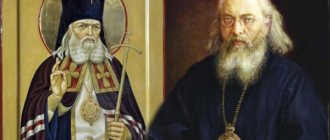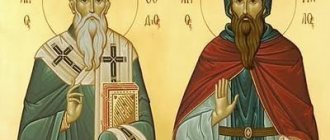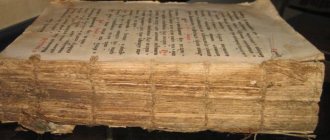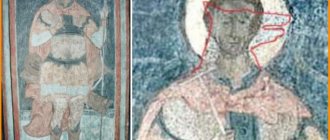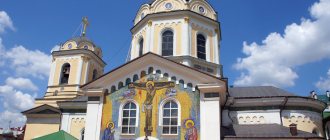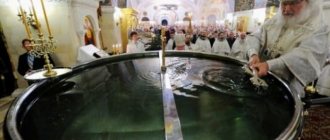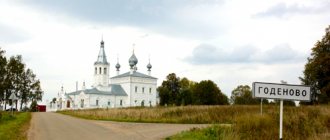The icon of St. Luke (Bishop of Crimea) is especially revered in the Orthodox world. Many Christian believers say warm and sincere prayers before the image of the saint. Saint Luke always hears requests addressed to him: through the prayers of believers, great miracles are performed daily - many people find deliverance from various mental and physical ailments.
The relics of Luke of Crimea show various healings these days, testifying to the great spiritual power of the saint. To worship the shrine, many Christians come to Simferopol from different cities of the world.
The icon of St. Luke is intended to remind people of the life of a great man, fearlessly following in the footsteps of the Savior, who embodied the example of the Christian feat of bearing the cross of life.
On the icons, Saint Luke of Voino-Yasenetsky is depicted in archbishop's vestments with his hand raised in blessing. You can also see an image of the saint sitting at a table over an open book, in the works of scientific activity, which reminds Christian believers of fragments of the saint’s biography. There are icons depicting a saint with a cross in his right hand and the Gospel in his left. Some icon painters represent St. Luke with medical instruments, recalling his life's work.
The icon of St. Luke is highly revered by the people - its significance for Christian believers is very great! Like St. Nicholas, Bishop Luke became a Russian miracle worker, coming to the aid of all life’s difficulties.
Nowadays, the icon of St. Luke is found in almost every home. This is primarily due to the great faith of the people in the miraculous help of the saint, who is capable of healing any illness by faith. Many Christians turn to the great saint in prayer for deliverance from various ailments.
The early years of Archbishop Luke Voino-Yasenetsky
Saint Luke, Bishop of Crimea (in the world - Valentin Feliksovich Voino-Yasenetsky), was born in Kerch on April 27, 1877. Since childhood, he was interested in painting, attending a drawing school, where he demonstrated considerable success. After completing the gymnasium course, the future saint entered the university at the Faculty of Law, but after a year he stopped classes, leaving the educational institution. Then he tried to study at the Munich School of Painting, however, the young man did not find his calling in this area either.
Desiring with all his heart to benefit his neighbors, Valentin decided to enter the Faculty of Medicine at Kiev University. From the first years of his studies, he became interested in anatomy. Having graduated from the educational institution with honors and received the specialty of a surgeon, the future saint immediately began practical medical activity, mainly in eye surgery.
Saint Luke, life
Valentin Feliksovich Voino-Yasenetsky was born in the city of Kerch in 1877. His father was a pharmacist. As a child, the boy was interested in drawing, but in life he did not become an artist and did not choose his father’s profession. After the saint graduated from the Kiev University Faculty of Medicine, he received the training of a surgeon and went to war.
His practical activities had already begun there. At the same time, Valentin Feliksovich began his scientific work, thanks to which, upon returning to Moscow, he was hired to work at Dyakonov’s clinic. 1915 was a significant year. During this period, St. Luke published the monograph “Regional Anesthesia” and received a prize from the University of Warsaw.
After the death of his wife from tuberculosis in Tashkent, at the insistence of the bishop, Valentin Feliksovich was ordained and began to serve the Lord. At the same time, Father Valentin does not give up his medical practice and continues to work diligently and a lot.
The best article for you, go to: Holy Blessed Prince Vyacheslav of Czech
He became a monk in 1923. At the same time, he was awarded the rank of bishop and given the name of the apostle and artist Luke. Because of his faith and service to God, Saint Luke was arrested more than once and sent into exile. But even there he did not stop treating sick people.
For his scientific works he was awarded the Stalin Prize, 1st degree. In 1942, he was awarded the rank of archbishop, and was also entrusted with the position of chief surgeon of the Krasnodar region.
After the Second World War, the bishop came to Crimea. He fought against the devastation that reigned at that time. He forced all clergy to strictly adhere to the canons of the church, and put churches in order. In addition, he treated those in need for free. They also said that healing from Saint Luke could only be obtained by touching his cassock during the service.
The life of Saint Luke ended in 1961 on All Saints' Day, June 11. He was buried in the Simferopol cemetery. People claim that even after death, one could come to Luke’s grave, drink water from it or take soil, and healing would certainly occur in the shortest possible time. But this must be done with deep faith and a desire to recover.
The best article for you, go to: Elder Porfiry Kavsokalivit
Today, the saint’s relics are kept in the New Trinity Church, where they were moved in 1995.
Chita
In 1904, the Russo-Japanese War began. V.F. Voino-Yasenetsky went to the Far East as a volunteer. In Chita, he worked at the Red Cross hospital, where he carried out practical medical activities. Heading the surgical department, he successfully operated on wounded soldiers. Soon the young doctor met his future wife, Anna Vasilievna, who worked as a nurse at the hospital. In their marriage they had four children.
From 1905 to 1910, the future saint worked in various district hospitals, where he had to conduct a wide variety of medical activities. At this time, the widespread use of general anesthesia began, but there was not enough necessary equipment and specialist anesthesiologists to perform operations under general anesthesia. Interested in alternative methods of pain relief, the young doctor discovered a new method of anesthesia for the sciatic nerve. He subsequently presented his research in the form of a dissertation, which he successfully defended.
Pereslavl-Zalessky
In 1910, the young family moved to the city of Pereslavl-Zalessky, where the future Saint Luke worked in extremely difficult conditions, performing several operations daily. Soon he decided to study purulent surgery and began to actively work on writing his dissertation.
In 1917, terrible upheavals began in the fatherland - political instability, widespread betrayal, the beginning of a bloody revolution. In addition, the young surgeon's wife falls ill with tuberculosis. The family moves to the city of Tashkent. Here Valentin Feliksovich holds the position of head of the surgical department of the local hospital. In 1918, Tashkent State University was opened, where the doctor teaches topographic anatomy and surgery.
Tashkent
During the civil war, the surgeon lived in Tashkent, where he devoted all his energy to healing, performing several operations every day. While working, the future saint always fervently prayed to God for help in completing the work of saving human lives. There was always an icon in the operating room, and a lamp hung in front of it. The doctor had a pious custom: before an operation, he always venerated icons, then lit a lamp, said a prayer, and only then got down to business. The doctor was distinguished by deep faith and religiosity, which led him to the decision to accept the priesthood.
Health A.V. Voino-Yasenetskaya's life began to deteriorate - she died in 1918, leaving four small children in the care of her husband. After the death of his wife, the future saint began to participate even more actively in church life, visiting churches in Tashkent. In 1921, Valentin Feliksovich was ordained to the rank of deacon, and then to the rank of priest. Father Valentin became the rector of the church, in which he always very lively and diligently preached the Word of God. Many colleagues treated his religious beliefs with undisguised irony, believing that the scientific activity of a successful surgeon had finally ended with his ordination.
In 1923, Father Valentin took monastic vows with the new name Luke, and soon assumed the rank of bishop, which caused a stormy negative reaction from the Tashkent authorities. After some time, the saint was arrested and imprisoned. A long period of exile began.
Ten years in captivity
For two months after his arrest, the future Saint Luke of Crimea was in Tashkent prison. Then he was transported to Moscow, where a significant meeting of the saint took place with Patriarch Tikhon, imprisoned in the Donskoy Monastery. In the conversation, the Patriarch convinces Bishop Luke not to give up his medical practice.
Soon the saint was summoned to the KGB Cheka building on Lubyanka, where he was subjected to brutal interrogation methods. After the verdict was pronounced, Saint Luke was sent to Butyrka prison, where he was kept in inhumane conditions for two months. Then he was transferred to Taganskaya prison (until December 1923). This was followed by a series of repressions: in the midst of a harsh winter, the saint was sent into exile in Siberia, to distant Yeniseisk. Here he was settled in the house of a local wealthy resident. The bishop was allocated a separate room in which he continued to conduct medical activities.
After some time, Saint Luke received permission to operate in the Yenisei hospital. In 1924, he performed a complex and unprecedented operation to transplant a kidney from an animal to a human. As a “reward” for his work, local authorities sent a talented surgeon to the small village of Khaya, where Saint Luke continued his medical work, sterilizing instruments in a samovar. The saint did not lose heart - as a reminder of bearing the cross of life, there was always an icon next to him.
Saint Luke of Crimea was again transferred to Yeniseisk the following summer. After a short prison sentence, he was again admitted to medical practice and to church service in a local monastery.
The Soviet authorities tried with all their might to prevent the growing popularity of the bishop-surgeon among the common people. It was decided to exile him to Turukhansk, where there were very difficult natural and weather conditions. At the local hospital, the saint received patients and continued his surgical activities, operating with a penknife, and using the hair of patients as surgical suture material.
During this period, he served in a small monastery on the banks of the Yenisei, in the church where the relics of St. Basil of Mangazeya were located. Crowds of people came to him, finding in him a true healer of soul and body. In March 1924, the saint was again called to Turukhansk to resume his medical activities. At the end of his prison term, the bishop returned to Tashkent, where he again took on the duties of a bishop. The future Saint Luke of Crimea conducted medical work at home, attracting not only the sick, but also many medical students.
In 1930, Saint Luke was arrested again. After his conviction, the saint spent a whole year in Tashkent prison, subjected to all kinds of torture and interrogation. Saint Luke of Crimea endured difficult trials at that time. The prayer offered to the Lord daily gave him spiritual and physical strength to endure all adversities.
Then it was decided to transport the bishop into exile in northern Russia. All the way to Kotlas, the accompanying convoy soldiers mocked the saint, spat in his face, mocked and mocked him.
At first, Bishop Luke worked in the Makarikha transit camp, where people who had become victims of political repression served their sentences. The conditions of the settlers were inhumane, many decided to commit suicide out of despair, people suffered from massive epidemics of various diseases, and they were not provided with any medical care. Saint Luke was soon transferred to work at the Kotlas hospital, having received permission to operate. Next, the archbishop was sent to Arkhangelsk, where he remained until 1933.
What do they pray to Luka Krymsky for?
Believers turn to the icon of St. Luke with a variety of requests. The most frequent “guests” who come to the image are doctors and their patients.
What can you ask a saint for in your prayers:
- Ask for blessings for parents who suffer from any illness. It is believed that such prayer gives strength and grants healing to your loved one.
- At difficult and turning points in life, you can ask for more vitality and energy, to charge you with self-confidence and confidence that everything will be resolved in the most prosperous way.
- You can pray for the health and healing of children, for their prosperity, success, career, successful studies or happiness in their personal lives. It is important not to try to influence their lives, but simply ask for support and blessings.
- They ask Luka to give him happiness in his personal life, to improve family relationships, mutual understanding with his spouse and sincere love.
- About protection, help and support before the important operations that lie ahead of you. So that the surgical intervention goes well and brings healing.
- And most often, of course, the saint is asked for healing from a variety of diseases. You can hear more than one amazing story about how seriously ill people were healed for no apparent reason thanks to divine support.
- Doctors can ask for help in establishing an accurate diagnosis for a complex patient and pray for successful operations.
Due to numerous requests from readers, we have prepared an “Orthodox Calendar” application for smartphones. Every morning you will receive information about the current day: holidays, fasts, days of remembrance, prayers, parables. Download for free: Orthodox Calendar 2021 (available on Android)
What is important: remember that your wishes do not always come true instantly. Sometimes it takes time. Therefore, do not despair, pray again and again so that sooner or later you will receive what you ask for. It is equally important to sincerely believe in the power of your prayer and God and speak from your heart, rather than reading texts from a piece of paper.
Watch a video on the topic:
"Essays on purulent surgery"
In 1933, Luka returned to his native Tashkent, where his grown-up children were waiting for him. Until 1937, the saint was engaged in scientific activities in the field of purulent surgery. In 1934, he published a famous work entitled “Essays on Purulent Surgery,” which is still a textbook for surgeons. The saint never managed to publish many of his achievements, an obstacle to which was the next Stalinist repression.
Biography
At first, the future saint was not going to connect his life with the church, especially since during his youth they fought against religion in every possible way and mocked it. The young doctor had a family and a job. But after the death of his wife, he began to often attend divine services and strongly believed in the Lord. Over time, he was offered to become a priest, he agreed. On the icons, Saint Luke is depicted in the vestments of a bishop. He was indeed a bishop for a long time.
For his views, the saint was exiled to camps, where he continued to heal people. He helped the weak all his life, performed many thousands of operations, restored people's sight and more. He even did several significant scientific works, the results of which are still used by doctors all over the world.
- 1923 - takes monastic vows with the name Luke (in honor of the apostle).
- 1941 - consulted doctors in military hospitals, was chief surgeon.
- 1942 - receives the rank of archbishop.
- He was awarded the Stalin Prize for his scientific work.
Work as a courier at Yandex.Eda (up to 3,400 rubles per shift) leave a request →
The last years of his life he served in Crimea, raising the diocese literally from the ruins left after the war. There were few clergy, the churches were destroyed. The saint devoted all his strength to restoring the Church, and when he returned home, people who needed help were already waiting for him. The righteous man did not refuse anyone, nor did he take payment from anyone. Many believed that healing could be achieved if only by touching the hem of the saint's robe.
New persecution
In 1937, the bishop was again arrested on charges of murder, underground counter-revolutionary activities and conspiracy to destroy Stalin. Some of his colleagues, arrested with him, gave false testimony against the bishop under pressure. For thirteen days the saint was interrogated and tortured. After Bishop Luke did not sign the confession, he was again subjected to conveyor interrogation.
For the next two years he was imprisoned in Tashkent, periodically subjected to aggressive interrogation. In 1939 he was sentenced to exile in Siberia. In the village of Bolshaya Murta, Krasnoyarsk Territory, the bishop worked in a local hospital, operating on numerous patients under incredibly difficult conditions. The difficult months and years, full of hardships and hardships, were worthily endured by the future saint - Bishop Luke of Crimea. The prayers he offered for his spiritual flock helped many believers in those difficult times.
Soon the saint sent a telegram addressed to the Chairman of the Supreme Council asking for permission to operate on wounded soldiers. Next, the bishop was transferred to Krasnoyarsk and appointed chief physician of a military hospital, as well as a consultant to all regional military hospitals.
While working at the hospital, he was constantly monitored by KGB officers, and his colleagues treated him with suspicion and distrust, which was due to his religion. He was not allowed into the hospital cafeteria, and as a result he often suffered from hunger. Some nurses, feeling sorry for the saint, secretly brought him food.
How do prayers help? What to ask Saint Luke for
During his lifetime, Luka Krymsky was a wonderful surgeon and saved lives every day. He received talent from God and used it for the benefit of people. He lived in the 20th century and you can still meet people who communicated with him or saw him and thanked their relatives for the successful treatment.
Luke was a deeply religious man and led a righteous lifestyle. Even during the times of persecution of the church, he always had an icon in the operating room. Before starting an operation, he always read a prayer for the healing of the patient.
Having completed his earthly journey and gone to heaven, the Simferopol healer continues to help people overcome illness and save them from fatal diseases. The day of remembrance of the holy healer is celebrated on June 11. On March 18, the discovery of the relics took place.
People turn to the healer Luke with a request for healing and health for a loved one, relative, friends and parents. Even if a person is diagnosed with cancer, a strong prayer to Luke will help him and give him strength to fight the terrible disease. You can also read the complete collection of prayers for cancer.
Healer Luke helps in many cases. They pray to him:
- if there is an operation ahead (we also recommend strong prayers before the operation);
- about an easy pregnancy;
- in case of loss of vision about its return;
- for sick relatives and children so that they recover.
They pray to Luka Krymsky for recovery and ask for strength to overcome the illness. You can turn to the saint on behalf of relatives, loved ones and especially children. During their lifetime, the doctor often treated children, saved them from various diseases, and performed operations. He is especially attentive to prayers in which parents and others ask for children.
Adults turn to the holy healer asking for the health of their parents, especially if their weakness and infirmity have been prolonged. Also in this case, you can read prayers for health for children from their mother.
It doesn’t matter for whom an Orthodox Christian prays, reading the prayer text helps him to realize that the situation is difficult, but not hopeless, and to gain strength and patience to overcome everything. Those who read the text gain confidence in the positive outcome of treatment and peace of mind.
Liberation
Every day, the future Archbishop of Crimea Luka independently came to the railway station, selecting the most seriously ill for operations. This continued until 1943, when many church political prisoners fell under Stalin's amnesty. The future Saint Luke was installed as Bishop of Krasnoyarsk, and on February 28 he was able to independently serve the first liturgy.
In 1944, the saint was transferred to Tambov, where he carried out medical and religious activities, restoring destroyed churches, attracting many to the Church. They began to invite him to various scientific conferences, but they always asked him to come in secular clothes, to which Luke never agreed. In 1946 the saint received recognition. He was awarded the Stalin Prize.
Crimean period
Soon the saint's health seriously deteriorated, Bishop Luke began to see poorly. Church authorities appointed him Bishop of Simferopol and Crimea. In Crimea, the bishop continues his busy life. Work is underway to restore the churches; Luka receives patients for free every day. In 1956 the saint became completely blind. Despite such a serious illness, he selflessly worked for the good of the Church of Christ. On June 11, 1961, Saint Luke, Bishop of Crimea, peacefully departed to the Lord on the Day of the Feast of All Saints.
On March 20, 1996, the holy relics of Luke of Crimea were solemnly transferred to the Holy Trinity Cathedral in Simferopol. Nowadays, they are especially revered by the inhabitants of Crimea, as well as by all Orthodox Christians who ask for help from the great saint.
Icon "St. Luke of Crimea"
During his lifetime, many Christian believers who were personally acquainted with this great man felt his holiness, which was expressed in genuine kindness and sincerity. Luke lived a hard life, full of labor, hardship and adversity.
Even after the saint’s repose, many people continued to feel his invisible support. Since the archbishop's canonization as an Orthodox saint in 1995, the icon of St. Luke has continually shown various miracles of healing from mental and physical illnesses.
Many Orthodox Christians rush to Simferopol to venerate the great Christian treasure - the relics of St. Luke of Crimea. The icon of St. Luke helps many sick people. The importance of her spiritual power is difficult to overestimate. Some believers received help from the saint instantly, which confirms his great intercession before God for people.
Prayer to Luka Krymsky before surgery
There are very few people who have not had to go under the surgeon's knife. And no matter what kind of surgical intervention it is, the patient will still feel fear and anxiety. Even with ordinary appendicitis, people are nervous, not to mention more serious operations (for example, removal of tumors). Therefore, a patient who is awaiting surgery can calm himself down by reading a prayer to himself.
In addition, I would like to note that the doctors themselves also pray to Luka Krymsky when they face a difficult operation. It depends on them whether the patient will live or not.
O all-blessed confessor, our holy saint Luke, the great
servant of Christ. With tenderness bend the knee of our hearts,
and falling to the race of your honest and multi-healing relics, like
children of the father, we pray to you with all earnestness: hear us sinners and bring
our prayer to the merciful and humane God, to whom you
Now in the joy of the saints and with the faces of the angel stands. We believe that
you love us with the same love with which you loved all your neighbors,
staying on earth. Ask Christ our God, that the child may be strengthened
His own in the spirit of right faith and piety: let the shepherds give the holy
jealousy and concern for the salvation of the people entrusted to them: right
to keep the believers, to strengthen the weak and infirm in the faith,
instruct the ignorant, reprove the contrary. Give us all a gift
useful to everyone, and everything even for temporal life and for eternal life
useful to salvation: the establishment of our cities, the fruitfulness of the earth,
deliverance from famine and destruction, consolation to the grieving, to the sick
healing, return to the path of truth for those lost, parent
blessing, education and teaching of children in the passion of the Lord,
help and intercession for the poor and wretched. Give us all yours
Archpastoral blessing, and such a prayer intercession
having property, let us get rid of the wiles of the evil one and avoid all enmity and
disorders, heresies and schisms. Guide us on the path that leads to
villages of the righteous, and pray to the omnipotent God for us in eternal life
let us be worthy with you to continually glorify the Consubstantial One
and the Undivided Trinity, Father and Son and Holy Spirit. Amen.
Also, during and after the operation, your mother, husband or grandmother can pray for you. At the end of the operation, everyone who cares about the health and fate of the patient can ask for the patient’s recovery.
Miracles of Luka Krymsky
Nowadays, through the sincere prayers of believers, the Lord sends healings from many diseases thanks to the intercession of St. Luke. Real cases of incredible deliverances from various diseases that occurred thanks to prayer to the saint are known and recorded. The relics of Luke of Crimea exude great miracles.
In addition to deliverance from bodily ailments, the saint also helps in the spiritual struggle against various sinful inclinations. Some believing surgeons, deeply revering their great colleague, following the example of the saint, always pray before surgery, which helps to successfully operate even on complex patients. According to their deep conviction, Saint Luke of Crimea helps. Prayer addressed to him from the heart helps solve even the most difficult problems.
Saint Luke miraculously helped some students to enter a medical university, thus their cherished dream came true - to devote their lives to treating people. In addition to numerous healings from illnesses, Saint Luke helps lost, unbelieving people find faith, being a spiritual mentor and praying for human souls.
The great holy Bishop Luke of Crimea still performs many miracles to this day! Everyone who turns to him for help receives healing. There are known cases when the saint helped pregnant women to safely bear and give birth to healthy children who were at risk according to the results of multilateral studies. Truly a great saint - Luke of Crimea. Prayers offered by believers in front of his relics or icons will always be heard.
Prayer to Luke of Crimea for healing from any illness
Patients of the 21st century can be called happy people. Medicine has advanced far forward, the chances of recovery have increased significantly, and a new holy healer appeared before God - Bishop Luke of Crimea, a Russian doctor, surgeon, who went through all the misfortunes of hard times. He is familiar with all diseases, he feels the suffering of every patient .
O Great Luke, who gives bliss to people! We are touched and bowed down
kneel before your image. You are deep in our hearts, we fall to
to your face, we mourn over your multi-healing relics. We pray for
healing and health. As children ask their father earnestly, hear our prayers
ours, bring our prayer to God. May the merciful and humane
will bestow blessings on us. We believe in your healing power, drive away troubles and
illnesses from us, make our stay on earth easier. We ask your face
angelic to deliver us from torment and temptation. Beg from God for your children
your spiritual strength and the strength of your flesh. We are waiting for care and healing,
We entrust our destinies into your pious hands. The weak turn to you
and the weak, we ask you to strengthen our faith and heal our bodies. Instruct
us on the good path, drive away demonic deeds, protect us from evil temptations.
We pray for salvation, grant fertility to our land, grant to our cities
firmness, grant abundance to our tables, grant consolation to those who mourn,
grant healing to the sick, grant light to the lost, grant to parents
wisdom, grant children humility, grant help and intercession to the poor
your. We hope for your blessing and pardon. Intercede for us
before the Lord, ask him to protect us from the evil one, heresy and confusion. We
sinners who pray, led by you, we submit to your almighty hand.
Let us continually establish the Inseparable Trinity, the Father and the Son and the Holy Spirit.
Relics
When Luke's grave was opened, the incorruption of his remains was noted. In 2002, Greek clergy presented the Trinity Monastery with a silver shrine for the relics of the archbishop, in which they still rest today. The holy relics of Luke of Crimea, thanks to the prayers of believers, exude many miracles and healings. People come to the temple all the time to venerate them.
After Bishop Luke was glorified as a saint, his remains were transferred to the Cathedral of the Holy Trinity in the city of Simferopol. Pilgrims often also call this temple: “Church of St. Luke.” However, this wonderful one is called Holy Trinity. The cathedral is located at the address: Simferopol, st. Odesskaya, 12.
